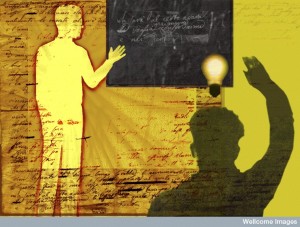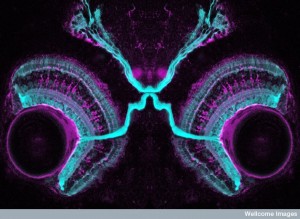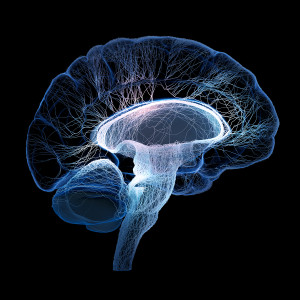 Can the deluge of recent neuroscience data help improve education? This post will summarize what is known, and not known, about brain data and its possible impact on methods of education. There is a lot media attention to brain research and many of the popular conclusions are exaggerations. In fact, even neuroscientists are responsible for this over reach by over interpreting MRI data (see post Limits of Neuroscience). A chief neuroscientist recently noted in Nature “neuroscientists would agree that, with a few notable exceptions, the relationship between neural circuits and behavior has yet to be established”.
Can the deluge of recent neuroscience data help improve education? This post will summarize what is known, and not known, about brain data and its possible impact on methods of education. There is a lot media attention to brain research and many of the popular conclusions are exaggerations. In fact, even neuroscientists are responsible for this over reach by over interpreting MRI data (see post Limits of Neuroscience). A chief neuroscientist recently noted in Nature “neuroscientists would agree that, with a few notable exceptions, the relationship between neural circuits and behavior has yet to be established”.
Research shows that the word “brain” is used far more than even a few years ago as an explanation for behavior in newspaper headings. One scientist defends this practice-telling people specific education methods “changes the brain” and therefore changes specific behaviors. Others note that every experience changes the brain. We really don’t know which of these alterations cause specific behaviors. Some of the observed brain changes have no effect and others are quite important. The 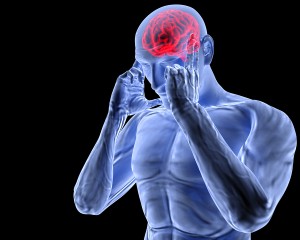 brain has been found to be much more active over an entire lifetime than anyone ever thought, with new neurons and other glia brain cells, as well as a vast number of new and pruned synapses every day. The important question is whether this is relevant-can neuroscience improve education?
brain has been found to be much more active over an entire lifetime than anyone ever thought, with new neurons and other glia brain cells, as well as a vast number of new and pruned synapses every day. The important question is whether this is relevant-can neuroscience improve education?
This post will summarize research including the capacities of infants and young children; deafness; brain circuits related to language, reading and dyslexia; multi-lingualism; nutrition; exercise; sleep; multi sensory circuits; neuroplasticity and music training.
Surprising Abilities in Infants and Children
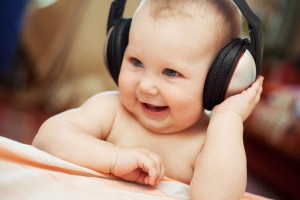 While it is premature to prescribe specific teaching methods for infants and children, there is no doubt that they are much more intelligent and aware than previously thought. Both behavioral and brain imaging studies show that infants already know aspects of language, mathematics and social awareness.
While it is premature to prescribe specific teaching methods for infants and children, there is no doubt that they are much more intelligent and aware than previously thought. Both behavioral and brain imaging studies show that infants already know aspects of language, mathematics and social awareness.
Clearly, it is advisable to speak intelligently to infants and children-using larger vocabulary, gesturing to emphasize the meaning of new words, and allowing their natural scientific enquiry to be prominent rather than excessive structure. The more words they learn the better. Words related to size and shape help science ability later. Children, also, learn from movement related to the conversation.
Infants often pay attention to new objects but can’t take that attention away from the object easily. Infants understand trustworthy and untrustworthy people. They understand immediate rewards but not delayed rewards.
The following is a summary of recent findings:
- 4 month olds process faces as adults, while other images lag behind (research through imaging)
 5 month olds are able to track causes of sounds and actions. Older children can observe more subtle causal relations. They make these correlations with small sample size.
5 month olds are able to track causes of sounds and actions. Older children can observe more subtle causal relations. They make these correlations with small sample size.- At age 6 months, infants distinguish two languages they do not know by looking at the speaker’s face. They are better at this if in a bilingual household.
- By 6 months infants know their names and names of parents, but also words for food and body parts.
- 9 month olds can tell which adults are friendly and unfriendly
- 14 month olds will mimic an unusual event if it is accompanied by an unusual word.
- Children 14 to 18 months learn words better with more parental talk using more words. Also, they learn more words when adults give non verbal cues as they use words.
- 8 month olds could not transfer knowledge to new situations but 16 months olds could.
- Infants 16 o 18 months old can predict the actions of others for goal directed behavior and can detect what the goals are and their future behavior. By tone of voice they could tell purposeful actions and accidents (“whoops” and “there”)
 2 year old children understand complex grammar before being able to speak sentences-much more than they can say (research using words and cartoons).
2 year old children understand complex grammar before being able to speak sentences-much more than they can say (research using words and cartoons).- 3 year olds can old 1.3 objects in working memory, 4 year olds 1.8 and adults 3 to 4 (via brain imaging)
- Children at age 3 understand that man made objects can be owned but objects from nature can not
- By 4.5 years children show high-level executive functions including planning, monitoring, task switching, and attention. Training that helps adolescence at this age could include having children help plan activities, and impulse control exercises such as thinking before taking an action (longitudinal study till age 15)
- More vocabulary at 4.5 increases thinking skills in adolescence (longitudinal study till age 15).
- 6 year olds understand when they are only told part of the truth. They, also, prefer teachers who do not spend time teaching what they already know, or what they can already infer.
- Sense of body is different in children and adults and at different ages based on different neural pathways developing in different sequences – one through seeing a hand touching us and one just seeing. (via sensory illusion)
- Young children use intuitions and expectations about possible outcomes. They analyze situations and eliminate unlikely possibilities.
Math and Science Training
- To teach children numbers, don’t say “look at three bears” because they don’t know what three is. First say “look at the bears,” then “there are three”. They can then figure out what a number is.
 Intensive math learning in second grade led to alterations in brain regions related to numbers that later helped math.
Intensive math learning in second grade led to alterations in brain regions related to numbers that later helped math.- If children ages 1 to 4 years learn more words about size and shape, their science ability is greater later in life.
- Using gestures while learning helped children with arithmetic. This can also increase abstract learning.
- Children as young as 2 years old are like little scientists, comparing hypotheses and data, making inferences about causation. Children experiment by watching and listening others and use statistics to reason. This implies that structured early learning is not the best way, but rather experimentation and reasoning from data.
Early Screening for Deafness and Dyslexia are Important
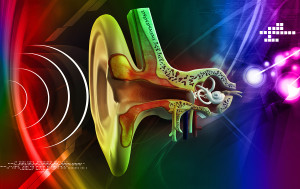 One of the most important conclusions is that all infants should be screened for deafness as early as possible. Treatment of deafness is advancing dramatically and earlier treatment helps all aspects of language.
One of the most important conclusions is that all infants should be screened for deafness as early as possible. Treatment of deafness is advancing dramatically and earlier treatment helps all aspects of language.
The brain circuits that have evolved for vision are fixed in the infant’s first few months. While this particular visual finding is fixed, many other aspects, such as perceptual learning can be altered with neuroplasticity throughout life. Reading is a form of neuroplasticity where visual symbols are linked to sounds.
Neuroscientists now think that words are the unit of reading. But, learning to identify words is a slow process that only later becomes automatic. First, some shapes are connected to symbols, then later to words. It appears that neuronal circuits first learn letters, then syllables, then small meaningful sounds. Some dyslexic children therefore 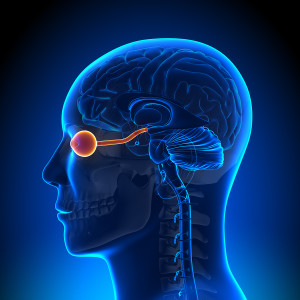 do better with more spacing between the words so they can more easily see the writing of meaningful small sounds.
do better with more spacing between the words so they can more easily see the writing of meaningful small sounds.
Treatment of dyslexia is advancing. It is best if dyslexia is found early and those who need it are helped with training in auditory processing. A brain measurement of evoked potentials may help in this, but there is danger of over interpretion of this test in the very young. Once again, we just don’t know enough.
Currently, there is a lot of danger of trying educational experimentation based on our very incomplete understanding.
Bilingual Effects on Learning
 Most children in the world are bilingual and bilinguals have the same rate of language learning as those with one language. Those with one language have larger vocabularies, but they are the same in bilinguals if you add the amount of words in both languages and compare it to that of the one language. Children use two languages as easily as one. Children are able to keep the two sets of words and sounds separate. Early bilinguals use more specific brain regions related to executive tasks.
Most children in the world are bilingual and bilinguals have the same rate of language learning as those with one language. Those with one language have larger vocabularies, but they are the same in bilinguals if you add the amount of words in both languages and compare it to that of the one language. Children use two languages as easily as one. Children are able to keep the two sets of words and sounds separate. Early bilinguals use more specific brain regions related to executive tasks.
Bilinguals have been noted to have better ability to control and monitor attention including inhibition of attention (related to impulse control). Bilinguals can switch between multiple tasks more easily and might be better at multi tasking. Brain studies show that bilingual people have more axon density in the anterior cingulate, which might correlate with more attention.
With fMRI studies, bilinguals produce more left hemisphere language region brain activity (left striatum and inferior frontal lobe). There is, also, less activity with conflict monitoring, including decrease in cingulate cortex activity. Also, there appears to be effects on brain structure related to executive planning. This is similar to the results of behavioral studies.
 While there appears to be positive effects of being bilingual, there are, also, potential negative effects in education. Bilinguals have decreased lexical access, which is defined as the process by which the basic sound-meaning connections of language are activated. They, also, have less vocabulary in the one language used in school compared to monolinguals. Cognitive control helps schoolwork, but less vocabulary and lexical access can hurt. At this time, it is difficult to have any definite general viewpoint based on current conclusions of neuroscience whether it helps or hurts schoolwork for an individual.
While there appears to be positive effects of being bilingual, there are, also, potential negative effects in education. Bilinguals have decreased lexical access, which is defined as the process by which the basic sound-meaning connections of language are activated. They, also, have less vocabulary in the one language used in school compared to monolinguals. Cognitive control helps schoolwork, but less vocabulary and lexical access can hurt. At this time, it is difficult to have any definite general viewpoint based on current conclusions of neuroscience whether it helps or hurts schoolwork for an individual.
There is research that suggests bilinguals may have more cognitive reserve in the elderly with better executive controls. One study found that dementia was 4 years later in bilinguals, but other research is inconsistent with this. Confounding this research is the fact that more intense use of the brain with more education of all types appears to fend off dementia longer, and it is not clear if this is the same effect noted in bilinguals. In bilingual elderly, the corpus callosum-the basic connection between the right and left-brain-is larger.
The research is just beginning and it is very complex. The general conclusion is that it is too early to make definite conclusions.
Diet and Learning
 The brain uses the most sugar of all organs and giving glucose before training has been shown to increase learning. Most children in the world who attend school have poor diet and therefore will not fully benefit from their schooling.
The brain uses the most sugar of all organs and giving glucose before training has been shown to increase learning. Most children in the world who attend school have poor diet and therefore will not fully benefit from their schooling.
Enough calories are necessary, but not too much. Too much fat in the diet slows NMDA receptors that are the critical neurons of learning. While it is not exactly proven which foods are always best, having an adequate breakfast of healthy food definitely enhances learning. This has been demonstrated with multivitamins also. Many of these multivitamins being sourced from places similar to Pharmacy Online (https://www.pharmacyonline.com.au/) so consider doing further research if you were interested in using multivitamins to support a healthy diet.
Exercise, Learning and Memory
 There is a wide range of studies that show the importance of exercise for the brain, and particularly with learning. Exercise uniquely creates a window of neuroplasticity, for good and the opposite. Learning of all types increases in this window, including learning for animals to become addicted. Exercise stimulates many neurotrophic factors that increase the creation of new neurons in the hippocampus, which is the center of learning and memory. This has been shown with increased size of the hippocampus as well as specific new cells.
There is a wide range of studies that show the importance of exercise for the brain, and particularly with learning. Exercise uniquely creates a window of neuroplasticity, for good and the opposite. Learning of all types increases in this window, including learning for animals to become addicted. Exercise stimulates many neurotrophic factors that increase the creation of new neurons in the hippocampus, which is the center of learning and memory. This has been shown with increased size of the hippocampus as well as specific new cells.
In animal studies, brain benefits that continue after exercise, such as increase in axons and astrocytes, occur when the animal has both exercise and an “enriched environment”. This is hard to translate exactly to humans, but refers to increased interesting activities. Animal studies show that deprivation damages learning and is restored when the environment is restored. But, it is not possible to extrapolate this to underprivileged children. The studies of very isolated orphans show damage to learning ability if it lasts too long. When children are adopted and put into good surroundings, the recovery depends upon the age and length and timing of deprivation.
Sleep, Learning and Memory
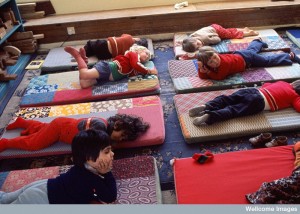 Recent discoveries about sleep include the remarkable finding that during deep sleep, neurons shrink and the extracellular space expands allowing increased cleaning out of debris, including misfolded proteins that produce brain degeneration. In addition, learning increases with both deep sleep and REM sleep. In fact, a recent study shows increased dendrite spines in memory centers produced during sleep.
Recent discoveries about sleep include the remarkable finding that during deep sleep, neurons shrink and the extracellular space expands allowing increased cleaning out of debris, including misfolded proteins that produce brain degeneration. In addition, learning increases with both deep sleep and REM sleep. In fact, a recent study shows increased dendrite spines in memory centers produced during sleep.
Studies show that for children, napping after learning increases memory and learning of all kinds. This increase occurs during general sleep at night and, more specifically, sleeping just after learning something at school. Also, material presented to someone during sleeping can increase memory (research with musicians learning songs better when played while they were asleep).
There are a wide range of brain studies showing changes related to learning after sleep. In non-dreaming sleep (non REM or NREM) learning correlates with slow brain wave oscillations. This occurs in toddlers, children and adults. Specific phases of sleep affect different types of learning. During NREM, consolidation of explicit memory-facts and knowledge-is increased. During dreaming (REM) procedural memory-actions like riding a bicycle-are increased. Since napping rarely produces dreaming, the explicit memory is enhanced, which is good for children’s school learning.
Deprivation of sleep clearly decreases learning. Many studies show that sleep increases memory and that sleep deprivation causes learning problems. In a society of chronic sleep deprivation, possibly the worst is with school children. One recommendation that is not being followed is that school should be later in the day, especially for teenagers. But, this is inconvenient for society. Also, more naps for toddlers, especially after learning helps learning. Naps could also be incorporated into teaching older students as well. They could learn specific things, and then take a nap.
Enlarging Neuroplasticity Circuit
 Neuroplasticity is a word for the changes that occur in neuron circuits correlated with learning. At first, it was thought to be a simple strengthening of synapses. But, recent research has found a large number of very different mechanisms that occur at different synapses in this process. In fact, they occur in large circuits throughout the brain at once. Also, when needed the brain changes its function by reorganizing connections, as well as strengthening and weakening synapses through a wide range of mechanisms. After two hours blindfolded, the brain uses the visual centers to transmit increased touch signals. Eventually, entire regions of the brain are rerouted.
Neuroplasticity is a word for the changes that occur in neuron circuits correlated with learning. At first, it was thought to be a simple strengthening of synapses. But, recent research has found a large number of very different mechanisms that occur at different synapses in this process. In fact, they occur in large circuits throughout the brain at once. Also, when needed the brain changes its function by reorganizing connections, as well as strengthening and weakening synapses through a wide range of mechanisms. After two hours blindfolded, the brain uses the visual centers to transmit increased touch signals. Eventually, entire regions of the brain are rerouted.
For a detailed discussion of these many mechanisms please see other posts. These mechinisms include new receptors, new parts of receptors, changes in scaffolding molecules, changes in ionic channels in the membrane, myosin motors and many others.
The important point is that a series of experiments show learning is stronger when these larger circuits are utilized. The following are examples where a physical movement is added to purely mental processes and increases the brain circuit and the learning.
 Visualizing a future high jump, the jump improves 35%. If a hand motion is added to the visualizing it increases to 45%
Visualizing a future high jump, the jump improves 35%. If a hand motion is added to the visualizing it increases to 45%- Two classes were taught arithmetic. The one where the teacher used hand gestures to explain learned it 50% better.
- Clenching the right hand while learning, increased learning in the left brain for memory of an event or action. Clenching the left hand increased learning in the right brain for later memory recollection.
- Chewing gum decreased reaction time for a variety of cognitive tests.
- Children taught mathematics using hand gestures learned better.
- Elderly with intractable pain, offered a wide range of therapy modalities at once, did better with more modalities regardless of which ones.
- If the learning or perception testing is done on an emphasized beat, the learning or perception is much greater than on the other beats, or without rhythm.
- Training of melodic singing is increased if using hand motions as well.
Another fact about the large learning circuits is that we use multi modal brain circuits much more frequently than previously thought. In fact, 50% of the brain’s sensory neurons are connected to at least two senses. A few examples (from many) include:
- Smells, sights and sounds can change the taste of a food. If an orange drink is colored red people think it tastes like cherry.
 Hearing speech usually involves visually observing the lips of speakers. In fact speech is ascertained in the brain by hearing centers, visual centers, and touch. When Helen Keller touched peoples lips, cheeks and necks she could understand their speech in the same language centers by touch.
Hearing speech usually involves visually observing the lips of speakers. In fact speech is ascertained in the brain by hearing centers, visual centers, and touch. When Helen Keller touched peoples lips, cheeks and necks she could understand their speech in the same language centers by touch.- Other examples include taste altered by sounds, and posture influenced by vision. If someone is observing a waterfall and has their hand on a table, there is a sensation that the table is moving upward.
When multiple brain modalities are used there is greater neuroplasticity and greater learning.
Music Training
 Please see other posts for detailed discussions of the unique effects of music on the brain, learning and memory. Music can uniquely trigger multi modal neuroplasticity in wide circuits and, therefore, can be used generally to increase brain capacities. This is called metaplasticity. The benefits from music training are triggered at any time during life, but if practiced as a child have the most long lasting and profound effects. This increased neuroplasticity is correlated with events that cause profound experiences, using intellectual content, music and bodily movement at the same time (such as religious events, concerts and political events).
Please see other posts for detailed discussions of the unique effects of music on the brain, learning and memory. Music can uniquely trigger multi modal neuroplasticity in wide circuits and, therefore, can be used generally to increase brain capacities. This is called metaplasticity. The benefits from music training are triggered at any time during life, but if practiced as a child have the most long lasting and profound effects. This increased neuroplasticity is correlated with events that cause profound experiences, using intellectual content, music and bodily movement at the same time (such as religious events, concerts and political events).
Can Neuroscience Improve Education
While considerable research is ongoing, it is difficult to have exact conclusions and much is unknown at this time. Also, it is critical to realize that individual children learn best in very different ways. Some theories about new methods of teaching that seemed to be based on sound ideas were disastrous in practice.
 Infants and young children are much more intelligent and aware than previously thought. Allowing them to learn in the manner of scientific experimentation and reasoning appears better for their particular early intelligence. Increased vocabulary increases later learning, especially “size” and “shape” words for math and science. The study of bilingualism is just beginning and it appears to have advantages and possibly disadvantages in different circumstances.
Infants and young children are much more intelligent and aware than previously thought. Allowing them to learn in the manner of scientific experimentation and reasoning appears better for their particular early intelligence. Increased vocabulary increases later learning, especially “size” and “shape” words for math and science. The study of bilingualism is just beginning and it appears to have advantages and possibly disadvantages in different circumstances.
There is no doubt that more sleep, including targeted naps after learning, better nutrition especially breakfast, and moderate exercise would greatly help learning. Early testing for deafness is very important. Early testing of dyslexia is, also, important but it is not clear how early. Musical training, especially early, can be very beneficial.
Other than these, current neuroscience does not support dramatic alterations in education.



